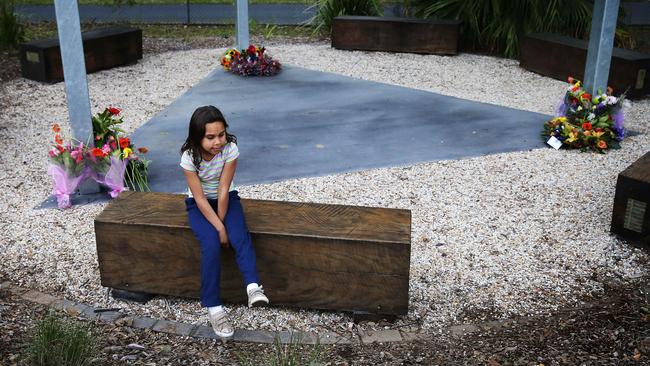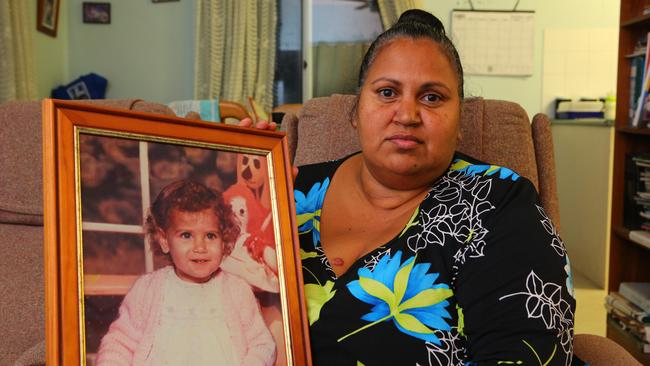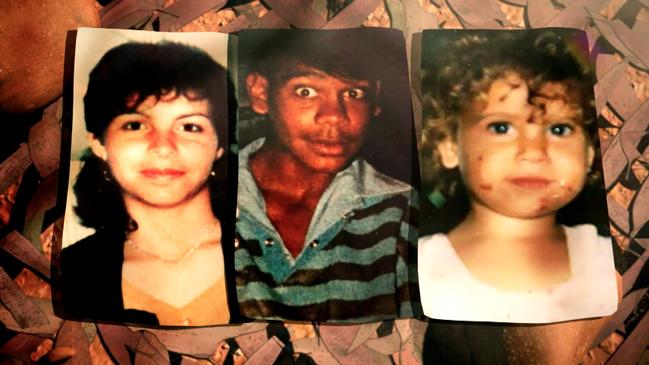Bowraville: third chance for justice
Bowraville takes the first steps towards a retrial over three murders.

The man chased the girl across the golf course.
She was only young, new to the area and did not know him but a witness, Tanya Buchanan, later said she did.
“She just kept running and he didn’t catch her,” Buchanan told an inquest. She said the chase took place in 1990, in Bowraville on the mid-north coast of NSW. Across five months between that year and the next, three children would go missing from the area.
This week, the man Buchanan alleged had chased the girl will be the subject of an unprecedented hearing in the state’s appeal court, which will be asked to quash two previous court findings that he is not guilty of murder and order a retrial.
“He couldn’t get to her because she ran,” Buchanan told the inquest. “If he had got to her …”
The Court of Criminal Appeal hearing may be the final act in a tragedy that has lasted 27 years. Three children — the outgoing 16-year-old Colleen Walker; Evelyn Greenup, who was shy and only four; and Clinton Speedy-Duroux, 16, who was nicknamed “Bubby” — disappeared between September 1990 and February 1991.
All three were Aboriginal. All three were staying at homes on the same street in Bowraville, known as the Mission and set aside for its black population.
Their families say that when they reported the children’s disappearance, local police said maybe they’d gone “walkabout”. Records from the time show officers also initially denied the missing children were connected, and did not treat them as potential murders.
Later, after Evelyn’s and Clinton’s bodies were discovered dumped beside a dirt track outside Bowraville, a white man from the town was charged with their murder. That man — whom The Australian is not naming — was subsequently found not guilty of killing each, in separate trials.
The families, and the police, allege that these verdicts were wrong. In their pursuit of justice in the years since, they have endured an inquest, a parliamentary inquiry, changes to the relevant legislation and repeated government refusals to send the matter back to court.
Throughout, the man himself has remained elusive. He was questioned once in court, in 1994, but he has since declined to give evidence when asked and, until The Australian spent weeks reporting on the case last year, said almost nothing about the murders publicly for decades.
“He used to hang with everyone,” says Evelyn’s aunt, Michelle Jarrett, who knew the man in Bowraville. “He went to school with … my sisters and cousins. They were friends with him. (He) would be welcome down on the Mission.”
Dozens of relatives of the murdered children are expected to fill the red seats of the state’s Banco Court in central Sydney on Wednesday for the start of the four-day hearing.
The choice of venue, with its polished wood and gilt-edged portraits hanging on the walls, suggests how seriously the judges are taking the case, in which they will be asked for the first time to order that someone who previously has been acquitted must face trial again.
It also will be the first time that evidence about all three of the murders has been heard together in a criminal court.
The decision to separate the trials over Evelyn and Clinton’s murders meant the juries hearing each were never told about alleged similarities between the killings or even that other children also disappeared.

The 2004 inquest at which Buchanan gave evidence remains the only time this evidence has been heard together. She “seemed a reasonable witness”, coroner John Abernethy noted at the time.
“I am of the view that the (Director of Public Prosecutions) should look closely at the three cases in making a decision as to proceed further,” he said.
In fact, it is the evidence about the oldest of the murders that is likely to be vital to the prosecution case.
The prosecution is to be led by Wendy Abraham QC, who was appointed by the then NSW attorney-general, Gabrielle Upton, when she finally sent the case to the appeal court last year. Her task is to convince the judges there is sufficient “fresh and compelling” evidence to quash the previous not guilty verdicts.
In doing so, she is expected to rely heavily on evidence about Colleen, the first of the children to go missing and whose body has not been found.
While Colleen’s clothes were fished from a river downstream of the road where the other children’s bodies were recovered, a decision was made at the time that there was too little evidence to charge anyone over her disappearance. As a result, Abraham will argue this evidence is “fresh”, in that it has never previously been heard in a criminal court.
To satisfy the appeal judges that it is “compelling”, she is expected to point to alleged similarities between the children’s disappearances.
Each of the three went missing after parties on the Mission. The man, who has now been charged again over Evelyn and Clinton’s deaths, was allegedly seen at each.
“The evidence is so compelling that it will carry the day … that’s the way the Attorney-General will present the case,” said Justice Clifton Hoeben, describing the prosecution approach during a preliminary court hearing.
But it would be a “hotly contested issue”, the judge said.

The court is being asked to rule against the principle of double jeopardy, which prevents a person being tried for the same crime twice. “There’s a number of grey areas here and we’re also embarking on unknown territory in that we the court have not been asked to interpret this … before,’’ Hoeben said.
There are other problems for the prosecution, including the length of time that has passed since the murders took place: Witnesses have died in the interim.
The conduct and resourcing of the police also are likely to be called into question.
Lawyers acting for the man may have the opportunity to cross-examine one detective, Gary Jubelin, who has pursued this case for more than 20 years.
The fact this case has gone unsolved throughout that time has bred resentment, particularly in Bowraville, where the families of the murdered children still live on neighbouring streets to the family of the man they suspect.
“I shouldn’t say this but I hate the place,” says Colleen’s mother, Muriel Craig, who grew up in a four-room house on the Mission. She believes others living in the town know more than they have said about the deaths.
“That’s where I was born and raised but … there’s a lot of people in Bowraville I do hate, believe me,” says Craig.
For her, and those others in the children’s families, Wednesday represents an opportunity to answer suspicions. If Abraham convinces the court, the man could face a retrial, potentially over all three deaths. Should Abraham fail, the children’s families say they do not know what — if anything — will happen next.
“We’ve tried everything” over the past quarter-century, says Clinton’s father, Thomas Duroux. Should the court reject them, “we just got to go back to square one and start again, I suppose,” he said.
The man himself has not lived in Bowraville since he was first charged with Clinton’s murder, although his family and a number of old friends still live in the town.
Several insist on his innocence. One, who asked not to be named, says “he didn’t do it’’.
“I know he wouldn’t do it … I believe he wouldn’t do it, I believe he wouldn’t be able to,” he says.
After The Australian reported on the murders in the run-up to the decision to send the case to the appeal court, the man telephoned this newspaper to say he played no part in the children’s disappearance.
Asked whether he would welcome evidence about all three being heard again in court, he said he did not want the emotional or financial strain that would place on his family. “I don’t want none of that,” he said, “but, then again, I want the actual evidence to be all heard and seen that it wasn’t me.”
The man is not expected to testify at the court hearing that begins this week. He does not have to.
Asked why he declined to face questions at the 2006 trial over Evelyn’s killing, the last time any of the deaths were subject to a court proceeding, he said his lawyers told him not to: “I didn’t need to testify … because there was just no evidence against me.
“At that point, it’s not about clearing things up, it’s about winning the case.’’
Earlier this month, a memorial to Evelyn was erected in Bowraville, the last of three tributes established to commemorate each of the three kids. It reads:
Smiles can hide sadness
Tears can be swept away
But the pain of losing you
Will never go away
Her grave lies in the town cemetery, among the graves of other members of Bowraville’s Aboriginal population, which are marked with white wooden crosses or simple piles of rocks, and lie at the bottom of the hill, against the fence.
Above them, marked with imposing stone monuments arranged neatly in rows, stand the graves of Bowraville’s white families. This physical separation reflects that of the town itself, which is still largely segregated by race.
The white residents live mostly in the neat blocks of pretty houses organised around High Street and most of the black people live beneath them on the Mission, in dun-coloured brick homes.
One woman, Alison Walker, defied that segregation and, as a result, has sadly had a better vantage point than most to watch how the town responded to the tragedy of the children’s killings.
Walker once lived with the man in a house on the Mission and they had a son together. She is also Colleen’s aunt.
As the state’s highest court readies itself for Wednesday, she says: “I want justice.” She, too, believes that someone must know more about the murders than they have so far admitted.
She hopes they “will stop hiding what they know”. She hopes there will be “justice for what they did”.



